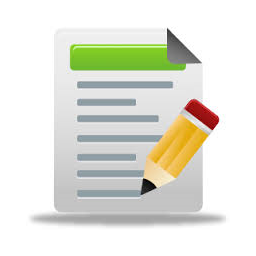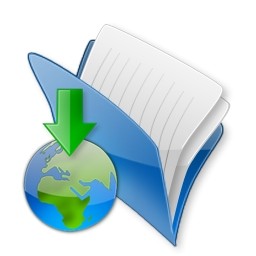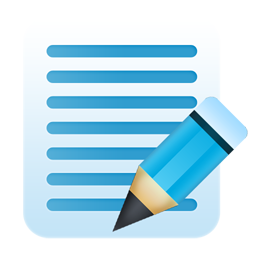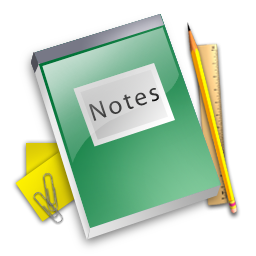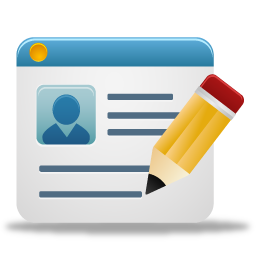Accountancy
CBSE has made changes in class 11 and 12 accountancy syllabus as per the new company law. Here is complete course on class 11 introduction to accounting, theory base of accounting, recording of transactions, preparation of Journal, ledger account, trial, bank reconciliation statement, depreciation, provisions and reserves, bill of exchange, rectification of error, financial statements of sole proprietorship, financial statements of non profit organisation, accounts from incomplete records, applications of computers in accounting.

CBSE, JEE, NEET, CUET
Question Bank, Mock Tests, Exam Papers
NCERT Solutions, Sample Papers, Notes, Videos

myCBSEguide App
Complete Guide for CBSE Students
NCERT Solutions, NCERT Exemplars, Revison Notes, Free Videos, CBSE Papers, MCQ Tests & more.
Download CBSE class 11 Accountancy study material in PDF format. MyCBSEguide provides solved papers, board question papers, revision notes and NCERT solutions for CBSE class 11 Accountancy. The topics included are introduction to accounting, theory base of accounting, recording of transactions, preparation of Journal, ledger account, trial, bank reconciliation statement, depreciation, provisions and reserves, bill of exchange, rectification of error, financial statements of sole proprietorship, financial statements of non profit organisation, accounts from incomplete records, applications of computers in accounting.
PART A: FINANCIAL ACCOUNTING - I
Unit-1: Theoretical Frame Work
Introduction to Accounting
- Accounting- concept, objectives, advantages and limitations, types of accounting information; users of accounting information and their needs.
- Basic accounting terms: business transaction, account, capital, drawings, liabilities (non - current and current); assets (non-current and current) fixed assets (tangible and intangible assets), receipts (capital and revenue), expenditure (capital, revenue and deferred), expense, income, profits, gains and losses, purchases, purchases returns, sales, sales returns, goods, stock, inventory, trade receivables (debtors and bills receivable), trade payables (creditors and bills payable), cost, vouchers, discount - trade and cash.
Theory Base of Accounting
- Fundamental accounting assumptions: going concern, consistency and accrual.
- Accounting principles: accounting entity, money measurement, accounting period, full disclosure, materiality, prudence, cost concept, matching concept and dual aspect.
- Accounting Standards and IFRS (International Financial Reporting Standards): concept and objectives
- Double entry system of accounting.
- Bases of accounting - cash basis and accrual basis.
Unit-2: Accounting Process
Recording of Transactions
- Accounting equation: analysis of transactions using accounting equation.
- Rules of debit and credit: for assets, liabilities, capital, revenue and expenses.
- Origin of transactions- source documents/ supporting vouchers (invoice, cash memo, pay in slip, cheque), debit note, credit note, preparation of accounting vouchers – cash (debit and credit) and non cash (transfer).
- Books of original entry: format and recording - Journal.
- Cash book: simple cash book, cash book with discount column and cash book with bank and discount columns, petty cash book.
- Other books: purchases book, sales book, purchases returns book, sales returns book and journal proper.
Preparation of Bank Reconciliation Statement,
Ledger and Trial Balance
- Bank reconciliation statement- concept, calculating bank balance at an accounting date: need and preparation. Corrected cash book balance.
- Ledger - format, posting from journal, cash book and other special purpose books, balancing of accounts.
- Trial balance: objectives and preparation {Scope: Trial balance with balance method only)
Depreciation, Provisions and Reserves.
- Depreciation: concept, need and factors affecting depreciation; methods of computation of depreciation: straight line method, written down value method (excluding change in method)
- Accounting treatment of depreciation: by charging to asset account, by creating provision for depreciation/ accumulated depreciation account, treatment of disposal of asset.
- Provisions and reserves: concept, objectives and difference between provisions and reserves; types of reserves- revenue reserve, capital reserve, general reserve and specific reserves.
Accounting for Bills of Exchange.
- Bills of exchange and promissory note: definition, features, parties, specimen and distinction.
- Important terms : term of bill, due date, days of grace, date of maturity, discounting of bill, endorsement of bill, bill sent for collection, dishonor of bill, noting of bill , retirement and renewal of a bill.
- Accounting treatment of bill transactions. '
Rectification of Errors
- Errors: types-errors of omission, commission, principles, and compensating; their effect on Trial Balance.
- Detection and rectification of errors; preparation of suspense account.
Part B: Financial Accounting - II (40 Marks)
Unit 3: Financial Statements of Sole Proprietorship: From Complete and Incomplete Records (40 Periods)
- Financial statements: objective and importance.
- Trading and profit and loss account: gross profit, operating profit and net profit.
- Balance sheet: need, grouping, marshalling of assets and liabilities.
- Adjustments in preparation of financial statements : with respect to closing stock, outstanding expenses, prepaid expenses, accrued income, income received in advance, depreciation, bad debts, provision for doubtful debts, provision for discount on debtors, abnormal loss, goods taken for personal use, goods distributed as free samples and manager's commission.
- Preparation of Trading and Profit and Loss account and Balance Sheet of sole proprietorship.
- Incomplete records: uses and limitations.
- Ascertainment of profit/loss by statement of affairs method.
Unit 4: Financial Statements of Not-for-Profit Organizations (30 Periods)
- Not-for-profit organizations: concept.
- Receipts and Payments Account: features and preparation.
- Income and Expenditure Account: features, preparation of income and expenditure account and balance sheet from the given receipts and payments account with additional information.
Scope:
(i) Adjustments in a question should not exceed 3 or 4 in number and restricted to subscriptions, consumption of consumables and sale of assets/ old material.
(ii) Entrance/ admission fees and general donations are to be treated as revenue receipts.
(iii) Trading Account of incidental activities is not to be prepared.
Unit 5: Computers in Accounting
- Introduction to computer and accounting information system {AIS}: Introduction to computers (elements, capabilities, limitations of computer system),
- Introduction to operating software, utility software and application software. Introduction to accounting information system (AIS) as a part of MIS
- Automation of accounting process: meaning
- Stages in automation: (a) Accounting process in a computerised environment; comparison between manual accounting process and computerised accounting process, (b) Sourcing of accounting software; kinds of software: readymade software; customised software and tailor-made software; generic considerations before sourcing accounting software (c) creation of account groups and hierarchy (d) generation of reports - trial balance, profit and loss account and balance sheet.
Scope:
(i) The scope of the unit is to understand accounting as an information system for the generation of accounting information and preparation of accounting reports.
(ii) It is presumed that the working knowledge of any appropriate accounting software will be given to the students to help them learn basic accounting operations on computers. For this,the teachers may refer to Chapter 4 of Class XII NCERT textbook on Computerized Accounting System.
Part C: Project Work (Any One) (10 Marks)
1. Collection of source documents, preparation of vouchers, recording of transactions with the help of vouchers.
2. Preparation of Bank Reconciliation Statement with the given cash book and the pass book with twenty to twenty-five transactions.
3. Comprehensive project starting with journal entries regarding any sole proprietorship business, posting them to the ledger and preparation of Trial balance. The students will then prepare Trading and Profit and Loss Account and Balance Sheet on the basis of the prepared trial balance. Expenses, incomes and profit (loss), assets and liabilities are to be depicted using pie chart / bar diagram.

myCBSEguide
Trusted by 1 Crore+ Students

Test Generator
Create papers online. It's FREE.

CUET Mock Tests
75,000+ questions to practice only on myCBSEguide app
 myCBSEguide
myCBSEguide